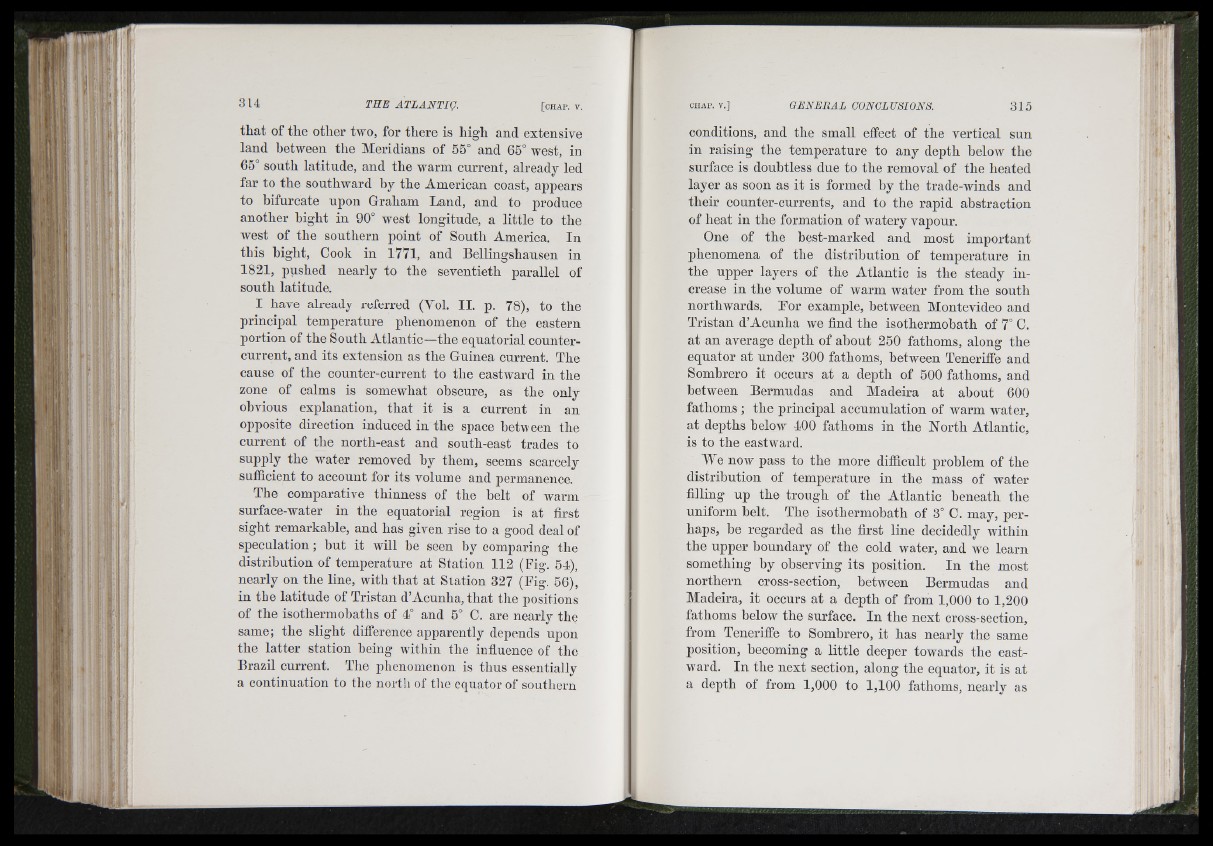
iik
m
iii - "i
!È:ì
-fj
that of the other two, for there is high and extensive
land between the Meridians of 55° and 65° west, in
65° south latitude, and the warm current, already led
far to the southward by the American coast, appears
to bifurcate upon Graham Land, and to produce
another hight in 90° west longitude, a little to the
west of the southern point of South America, In
this bight. Cook in 1771, and Bellingshausen in
1821, pushed nearly to the seventieth parallel of
south latitude.
I have already referred (Vol. II. p. 78), to the
principal temperature phenomenon of the eastern
portion of the South Atlantic—the equatorial counter-
current, and its extension as the Guinea current. The
cause of the counter-current to the eastAvard in the
zone of calms is somewhat obscure, as the only
obvious explanation, that it is a current in an
opposite direction induced in the space between the
current of the north-east and south-east trades to
supply the Avater removed hy them, seems scarcely
sufficient to account for its volume and permanence.
The comparative thinness of the belt of warm
surface-water in the equatorial region is at first
sight remarkahle, and has given rise to a good deal of
speculation; but it will be seen by comparing tbe
distribution of temperature at Station 112 (Fig. 51),
nearly on the line, with that at Station 327 (Fig. 56),
in tbe latitude of Tristan d’Acunba, tbat tbe positions
of the isothermohaths of 1° and 6° C. are nearly the
same; the slight difference apparently depends upon
the latter station being within the influence of the
Brazil current. The phenomenon is thus essentially
a continuation to tbe north of tbe equator of southern
conditions, and the small effect of the vertical sun
in raising the temperature to any depth helow the
surface is donhtless due to the removal of the heated
layer as soon as it is formed by tbe trade-winds and
tbeir counter-currents, and to the rapid abstraction
of heat in the formation of watery vapour.
One of the best-marked and most important
phenomena of the distribution of temperature in
the upper layers of the Atlantic is the steady increase
in the volume of warm water from the south
northwards. For example, between Montevideo and
Tristan d’Acunha we find the isothermobath of 7° C.
at an average depth of about 250 fathoms, along the
equator at under 300 fathoms, between Teneriffe and
Sombrero it occurs at a depth of 500 fathoms, and
between Bermudas and Madeira at ahout 600
fathoms ; the principal accumulation of warm water,
at depths helow 400 fathoms in the North Atlantic,
is to the eastward.
We now pass to the more difficult problem of the
distribution of temperature in the mass of water
filling up the trough of the Atlantic beneath the
uniform belt. The isothermohath of 3° 0. may, perhaps,
he regarded as the first line decidedly within
the upper honndary of the cold water, and we learn
something hy observing its position. In the most
northern cross-section, between Bermudas and
Madeira, it occurs at a depth of from 1,000 to 1,200
fathoms below the surface. In the next cross-section,
from Teneriffe to Sombrero, it has nearly the same
position, becoming a little deeper towards the eastward.
In the next section, along the equator, it is at
a depth of from 1,000 to 1,100 fathoms, nearly as